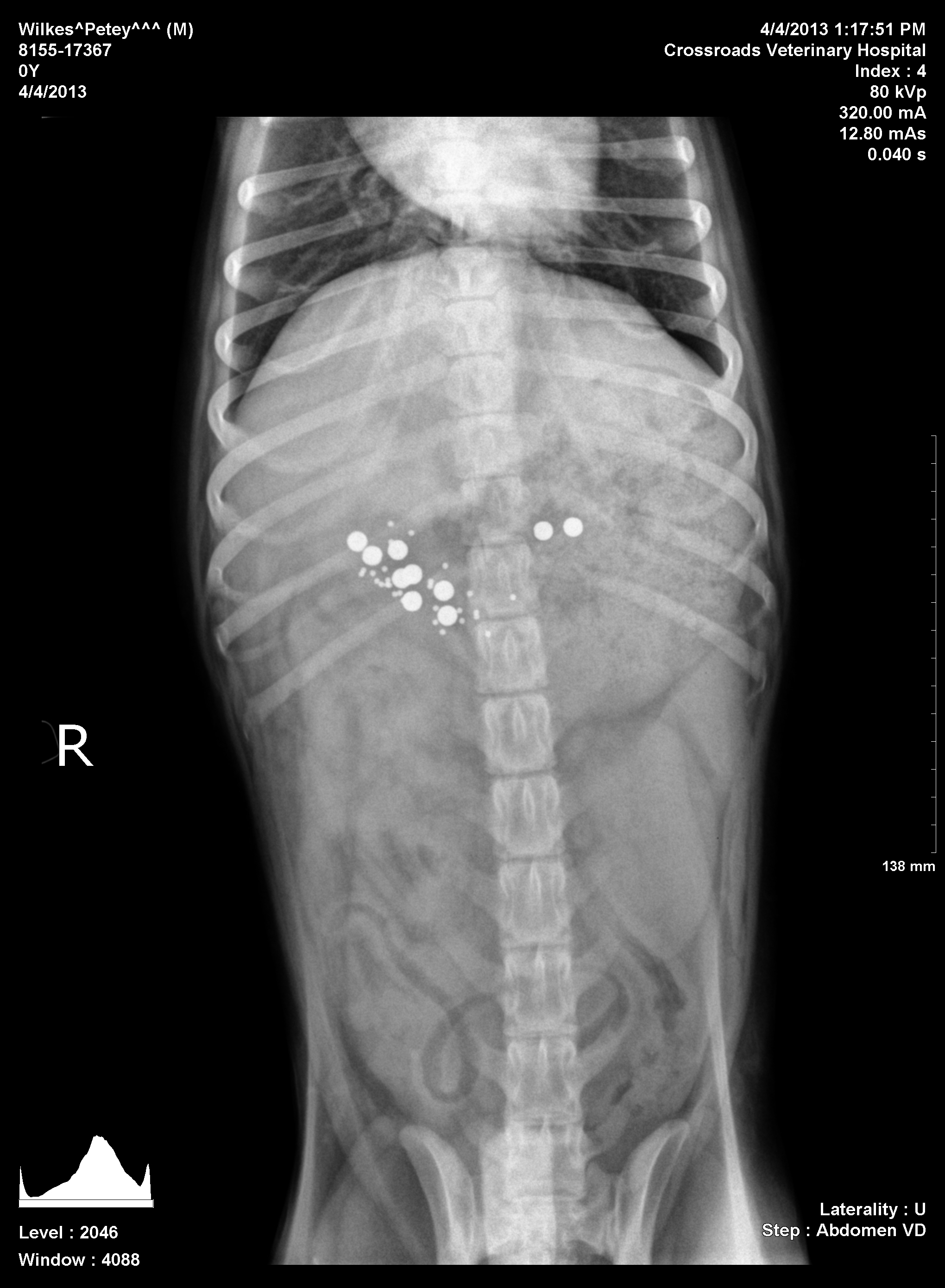Perhaps the biggest scam in the world is the assertion that there are “positive” methods that make punishment unnecessary. OK. Let’s see about that.  Talk to an ER vet about intestinal blockages. If a dog suffers from pica – a problem that is not connected to nutrition but is connected to ancient scavenging behavior, what are the options? Let’s say the dog ingests a sock and it passes. You now know the dog has the tendency to do such a thing. A week later, the dog ingests some underwear. Now you have a pattern forming. Next, the dog eats another sock and it hits the ER, where it’s belly will be sliced open (after confirmation of the blockage) as a first resort. The window of opportunity to save the dog’s life is limited to a few hours.
Talk to an ER vet about intestinal blockages. If a dog suffers from pica – a problem that is not connected to nutrition but is connected to ancient scavenging behavior, what are the options? Let’s say the dog ingests a sock and it passes. You now know the dog has the tendency to do such a thing. A week later, the dog ingests some underwear. Now you have a pattern forming. Next, the dog eats another sock and it hits the ER, where it’s belly will be sliced open (after confirmation of the blockage) as a first resort. The window of opportunity to save the dog’s life is limited to a few hours.
So, here are the options. If you could stop the behavior before it came to surgery, what would you do? What strategy or tool would you use to prevent the need for extensive, invasive, potentially life-threatening surgery? How does your philosophy serve you now? Should a trainer be blocked from using electric shock – which can easily be used with an IP Video Camera – to teach the dog an inhibition to ingesting inedible objects? Are you really so opposed to ‘pain and fear’ that you would block the use of a collar?
 If so, I have a couple of points to add. First, the obstruction causes pain and fear. The surgery will cause weeks to months of pain and fear IF the dog survives. How does the pain of an abdominal surgery compare to the transitory shock of an e-collar? When the dictum of “least invasive” is invoked, how is an electric skin shock worse than a scalpel ripping the belly open? The electric shock has no possibility of lethal outcome. Ironically, the absence of contingent punishment will insure the invasive, dangerous, risky, painful and often fear-filled experience of the obstruction and surgery.
If so, I have a couple of points to add. First, the obstruction causes pain and fear. The surgery will cause weeks to months of pain and fear IF the dog survives. How does the pain of an abdominal surgery compare to the transitory shock of an e-collar? When the dictum of “least invasive” is invoked, how is an electric skin shock worse than a scalpel ripping the belly open? The electric shock has no possibility of lethal outcome. Ironically, the absence of contingent punishment will insure the invasive, dangerous, risky, painful and often fear-filled experience of the obstruction and surgery.
One last kicker. After the surgery, the dog still has no behavioral inhibition to eating the next sock, panties, couch cushion, or other object that could cause a second, third or fourth surgery. Meaning the terrible pain and suffering of the surgery now leaves the animal in a weakened state – but no less likely to do it again. Only a behavioral inhibition can do that. According to the scientific literature, the behavioral effect known to stop behaviors and prevent their return is….
“Punishment can reduce a behavior’s frequency below its operant level to a zero level of occurrence. If such complete response suppression is produced, it is clear that the behavior will not recover unless a special effort is made to reestablish it.” Dr. Ron Van Houten: The Effects of Punishment on Human Behavior, Axelrod and Apsche, Academic Press, 1983, Chpt 2, pg 32
Now watch how science and common sense are ignored when ideology raises its ugly head.
Note: The picture at the top of the article is my dog, Petey, at 8 mos. He had a total blockage from a small section of a compressed flour “dental bone” that, by fluke, blocked the duct from the stomach to the bowel. The vets couldn’t explain how the item caused a blockage. It was too small. The X-Ray said otherwise. He survived the surgery.
